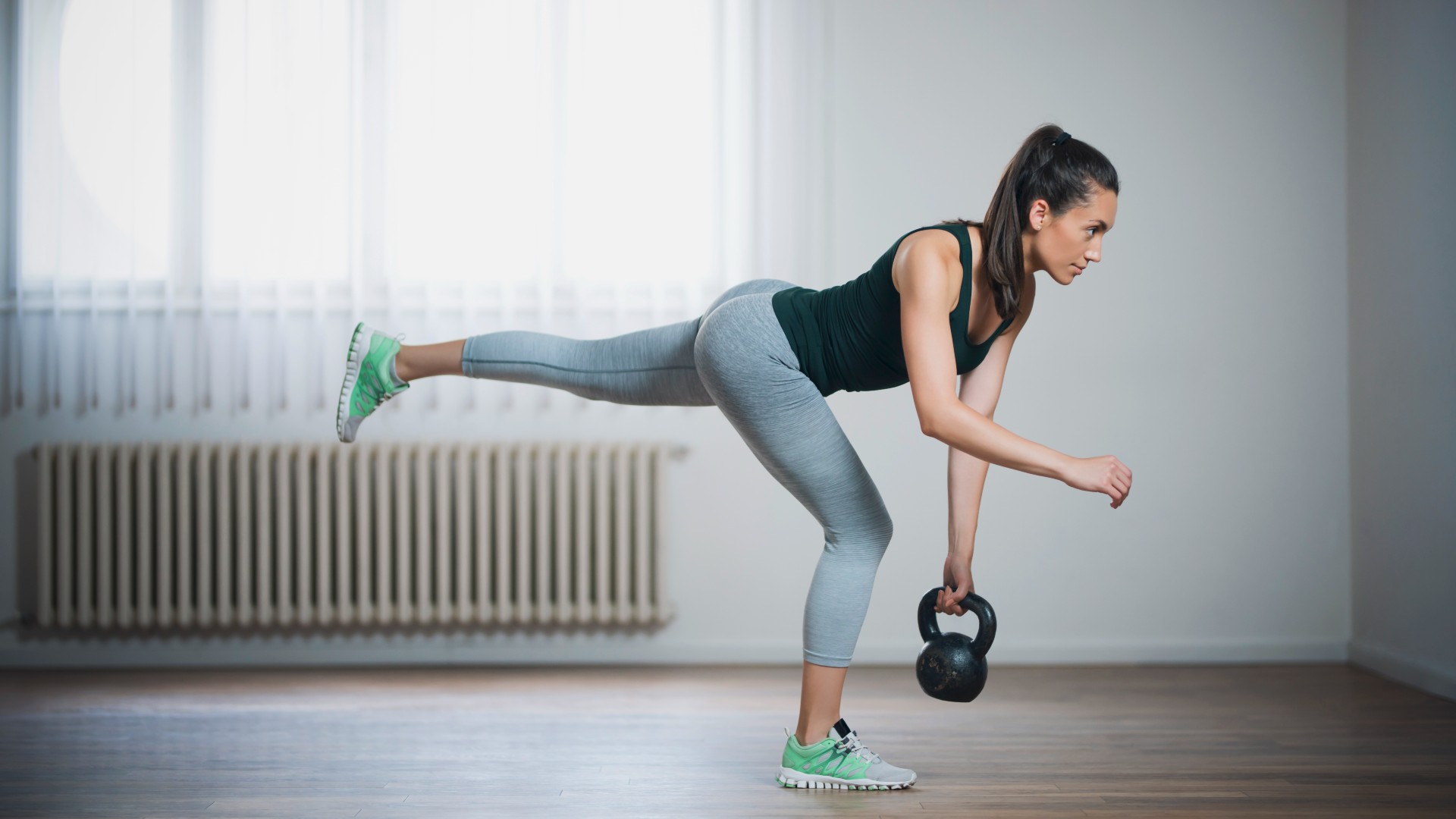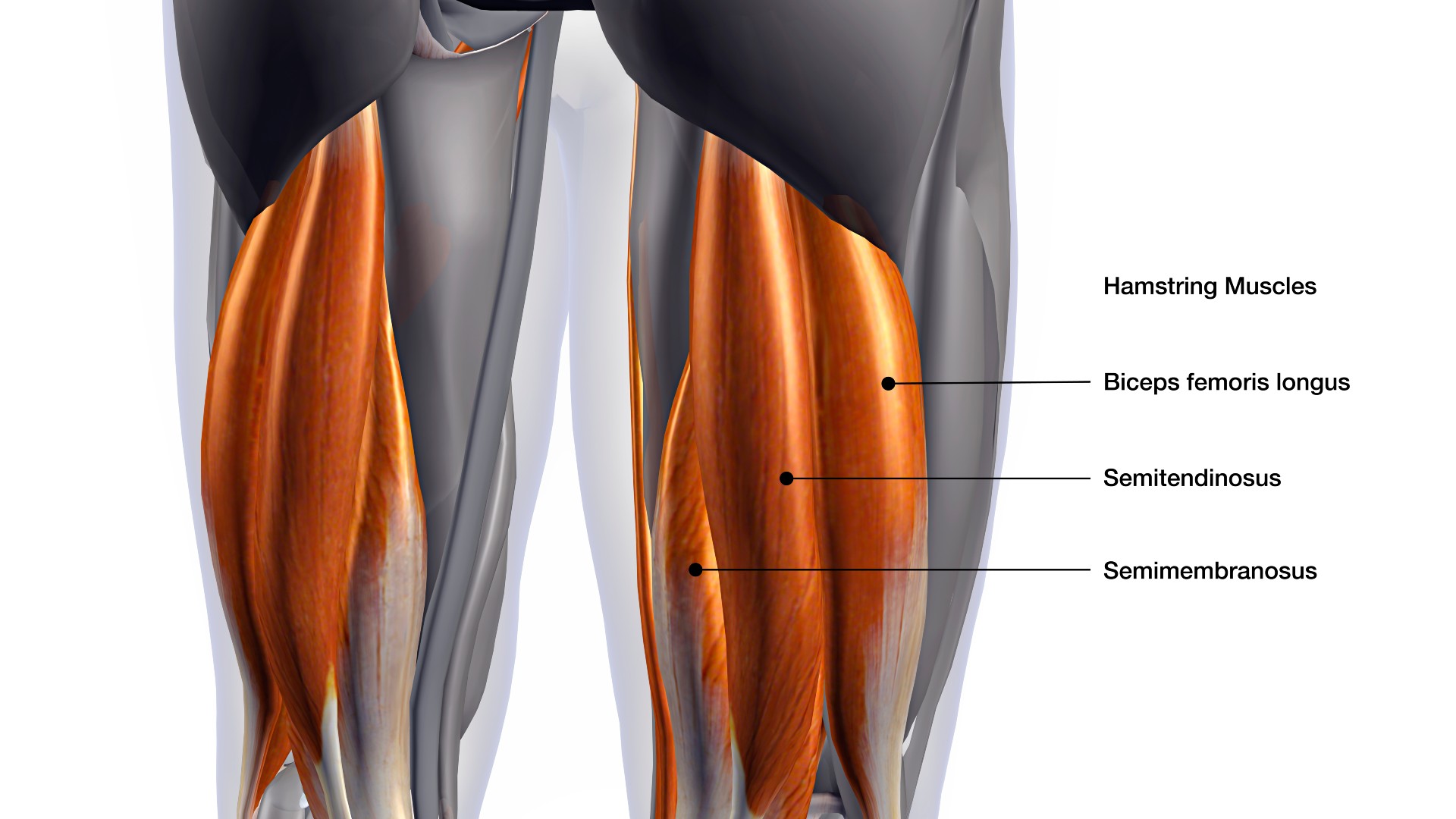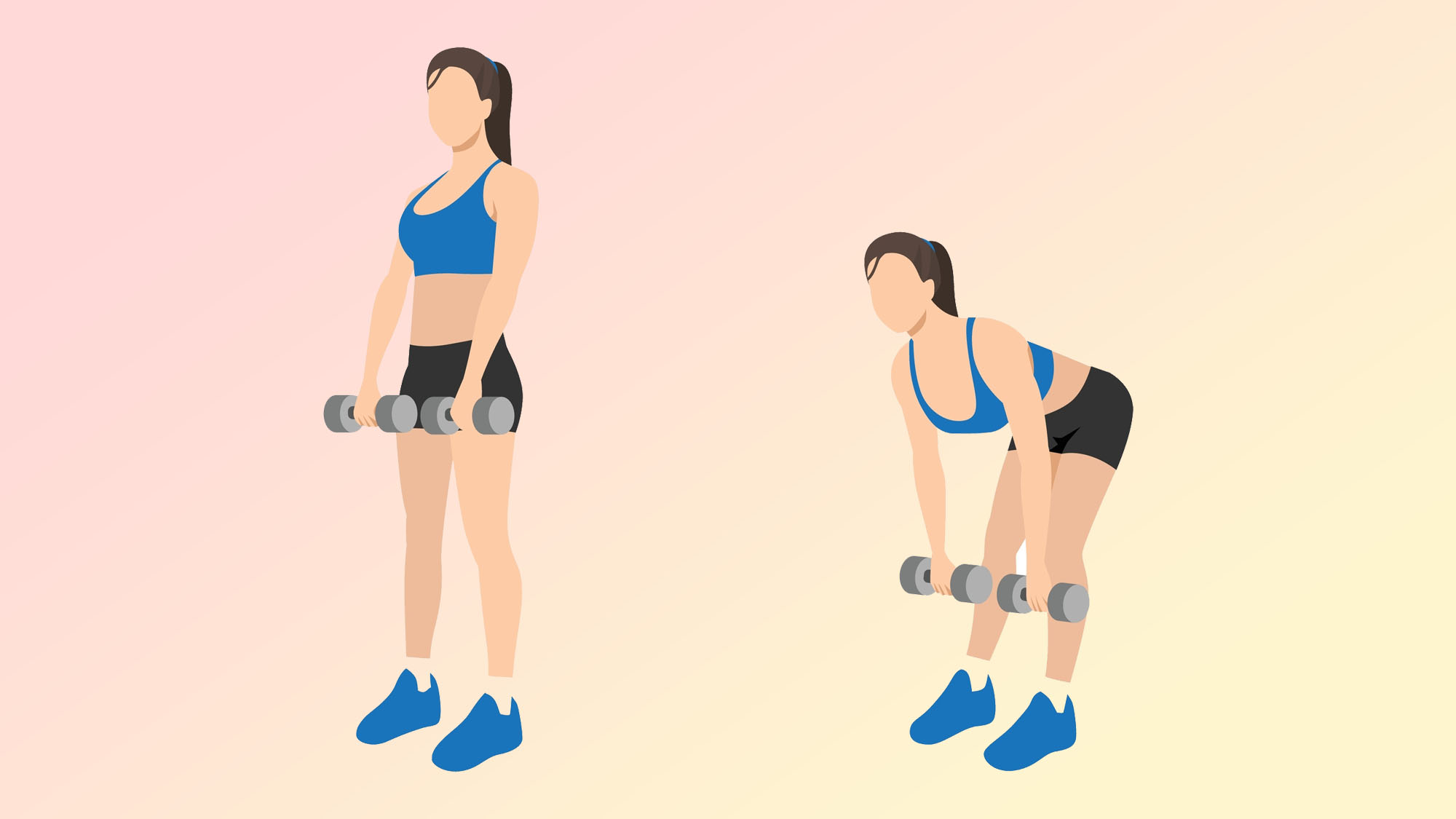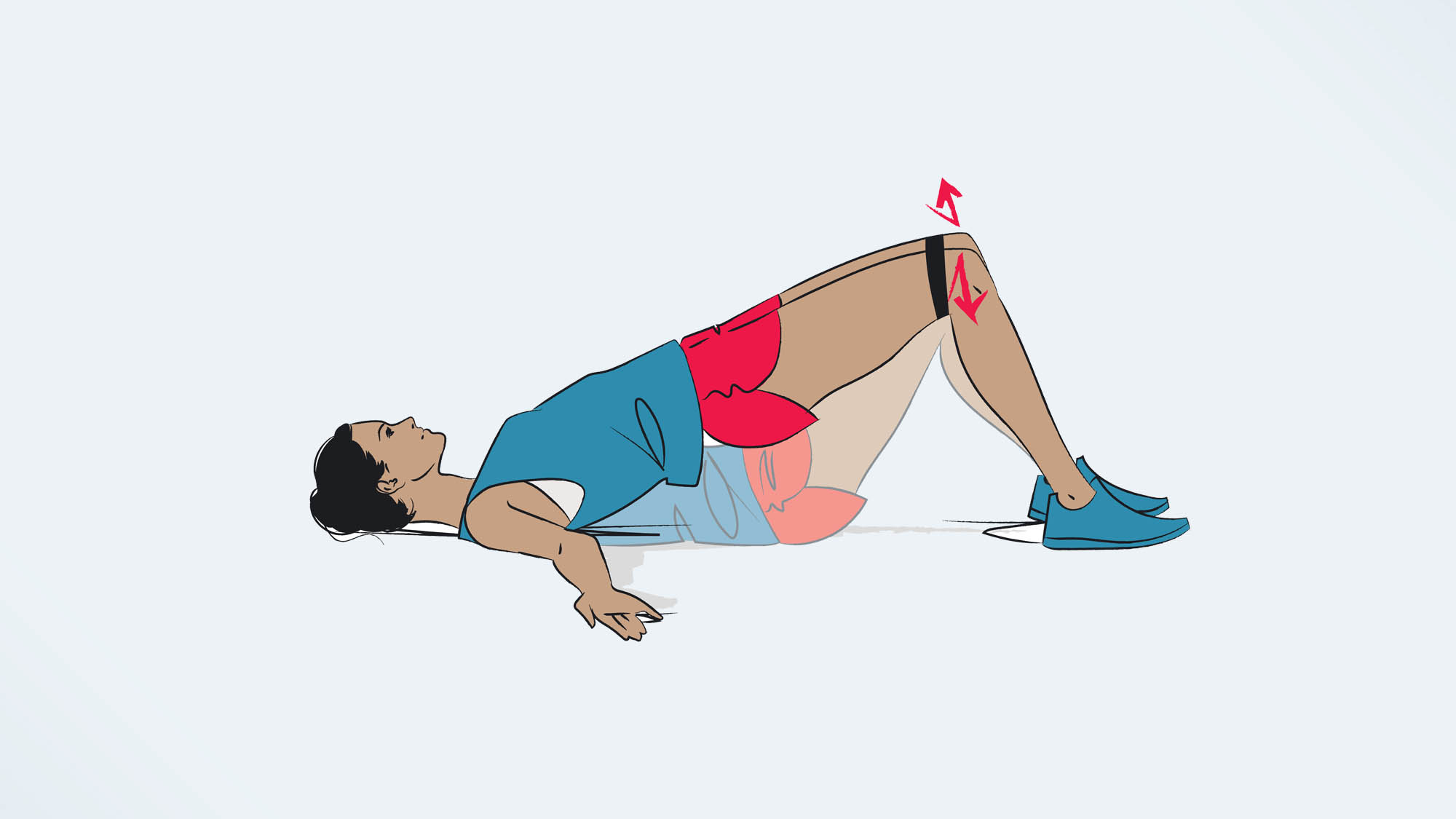
If you want to torch your hamstrings without spending hours in the gym, try these five moves next time you need a quick, effective hamstring workout. You only need a pair of dumbbells — we provide a round-up of the best adjustable dumbbells for weightlifting — or kettlebells and a spare 20 minutes to exercise.
To build strong, lean legs that are well-balanced, try to target your hamstrings as part of a regular leg day program. These are the large muscles that run down the backs of your legs, formed of three muscles that support knee flexion, hip extension, and rotation.
Granted, exercises like squats and lunges still work your hamstring muscles. After all, your quads and hamstrings are opposing muscle groups, so when you perform a squat, your hamstrings are active during hip extension and knee flexion. But do you give your hamstrings the attention they need?
This workout takes less than 20 minutes and can be done at home or in the gym. Just remember to factor in any stair or hill climbing you might need to do later! If you're looking for more, read up on the 10 best hamstring exercises.
Hamstring muscle function

The three hamstring muscles include the biceps femoris, semimembranosus, and semitendinosus. These muscles attach at the hips and insert into your knee joints and, as mentioned above, support hip and knee movement.
The hamstrings respond well to a powerful movement that recruits your fast-twitch muscle fibers responsible for exercises like sprinting or jumping. Uphill exercises like incline walking workouts or runs train muscular endurance and build strength in your lower body with a focus on the glutes, calves, and hamstrings.
Exercises that elevate the fronts of your feet could also target the hamstrings more effectively. Athletes like powerlifters, sprinters, or high jumpers could benefit from regular hamstring training and incorporating hamstring activation exercises into their lower body programs.
Get instant access to breaking news, the hottest reviews, great deals and helpful tips.
Hamstring workout — here's how
These five exercises are a great introduction to your hamstrings, emphasizing activation in the area without hamstring curls, which can cause knee pain in some people.
Perform these five exercises as an EMOM (every minute on the minute) workout, meaning you’ll perform a set number of repetitions of one exercise within a minute. Try to finish your reps with 10 to 15 seconds left to rest before the next minute starts. On the next minute, start the next exercise, and so on. Perform four rounds of the five exercises, totaling 20 minutes.
Scale your reps if necessary — if you’re finishing way before the next minute, add a few reps, and if you’re not managing any rest, strip back the reps. Aim for a heavy and challenging weight. No dumbbells? Mix and match any kit you have, like kettlebells, barbells, or even filled water bottles.
To build strength, power, and muscle mass in your hamstrings, incorporate hamstring exercises into your leg day programs several times a week. Here are the five moves we swear by.
Five-move hamstring workout to build strength, power, and muscle
During strength training programs, having a pair of sturdy gym shoes could help protect your joints — consider some of the best cross-training shoes to support safer workouts.
1. Deadlift: 8-12 reps
Deadlifts target multiple muscle groups and focus on the posterior chain (muscles located in the back of your body), including your lower back, core, glutes, and hamstrings.
Tip: Learn how to deadlift here.
How:

- Stand with your feet hip-width or shoulder-width apart, holding a weight in each hand
- Roll both shoulders back and down, engage your core, and squeeze your shoulder blades and lats
- Slightly bend the knees, hinge forward at your hips, and begin to lower the weights
- At around knee height, sit your bum down and lift your chest and bend your knees
- Exhale as you drive through your feet to stand, keeping the weights close to your legs
- Squeeze your glutes at the top and fully extend at your hips
2. Swings: 10-15 reps
By using the hip hinge movement and hip extension at the top of the move, this exercise is great for targeting the glutes, core and hamstring muscles.
Tip: Avoid squatting or sending the weight into your arms. Squeeze your glutes at the top. You can learn how to do kettlebell swings properly here.
How:

- Stand with feet shoulder-width apart (or slightly wider), toes pointed slightly outwards, and grip your weight or weights with both hands
- Maintain a soft knee bend and set your shoulders back and down
- Brace your core
- Hinge at your hips and send your bum back with a flat back
- Swing the weight back between your legs, then explosively drive it forward and up to shoulder height with a powerful extension at the hip
- Control the descent back down
3. Single-leg Romanian deadlift: 6 reps per leg
The single-leg Romanian deadlift (RDL) is a variation of the traditional RDL. During this version, you’ll stand on one leg while sending the other leg behind you and tapping the weight down in front of your standing foot. The variation challenges, balance, core stability, and coordination while working the hammy’s hard.
Tip: How to do a Romanian deadlift.
How:

- Stand feet hip-width apart, holding a weight in each hand, roll shoulders back, and engage your core
- Ground through your left leg, hinge forward at your hips, and lift your right leg behind you
- Maintain a soft knee bend in your standing leg and flat back, and begin to lower the weights just in front of your standing foot, lifting your right leg high behind you
- Keep your hips square, parallel to the floor
- Pause at the bottom. Drive up to stand and fully extend your hips at the top, lowering your right leg
- Complete your reps, then switch sides
4. Glute bridge walkouts
This move works your core, hip flexor muscles, glutes and hamstrings for a spicy walkout variation.
Tip: Here’s how to do a glute bridge properly. For an extra challenge, hold the weight over your chest with arms extended.
How:

- Start on your back with knees bent and feet planted down
- Tuck your pelvis toward your ribs, engage your core, then send your hips toward the ceiling
- Squeeze your glutes at the top and keep your hips high
- Keep your heels down and lift your toes, then slowly walk your feet away from you
- When you feel a stretch through your hamstrings, begin to walk your heels back in, then slowly lower your back to the floor
5. Good Mornings
The Good Morning is a hip-hinge move that hits a lot of big muscles like the hamstrings, glutes, and erector spinae muscles. The Good Morning also works your deeper core muscles.
Tip: If your hamstrings are tight, lower until you feel the hamstring stretch, then drive up to stand. Learn how to do Good Mornings here.
How:

- Begin standing, feet hip-width apart, soft knee bend
- Rack your weight to your upper back or in front of your chest
- Hinge forward at the hips. Keep your back flat as your bend forward, and avoid increasing the knee bend
- Hinge until your back is parallel with the floor, keeping your neck neutral
- Push your hips forward to stand
More from Tom’s Guide
- Our fitness writer did 100 kettlebell swings a day
- Try these core 5 barbell exercises to build muscle, power, and strength
- Try these core 5 dumbbell exercises.

Sam Hopes is a level 3 qualified trainer, a level 2 Reiki practitioner and fitness editor at Tom's Guide. She is also currently undertaking her Yoga For Athletes training course.
Sam has written for various fitness brands and websites over the years and has experience across brands at Future, such as Live Science, Fit&Well, Coach, and T3.
Having coached at fitness studios like F45 and Virgin Active and personal trained, Sam now primarily teaches outdoor bootcamps, bodyweight, calisthenics and kettlebells.
She also coaches mobility and flexibility classes several times a week and believes that true strength comes from a holistic approach to training your body.
Sam has completed two mixed doubles Hyrox competitions in London and the Netherlands and finished her first doubles attempt in 1:11.
